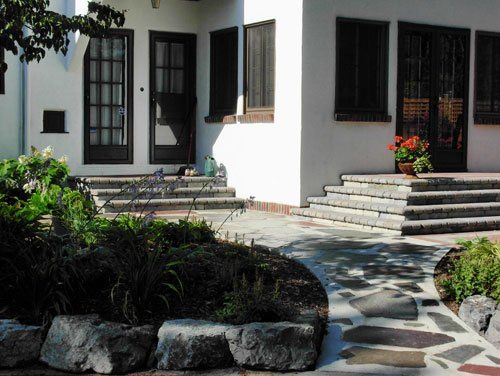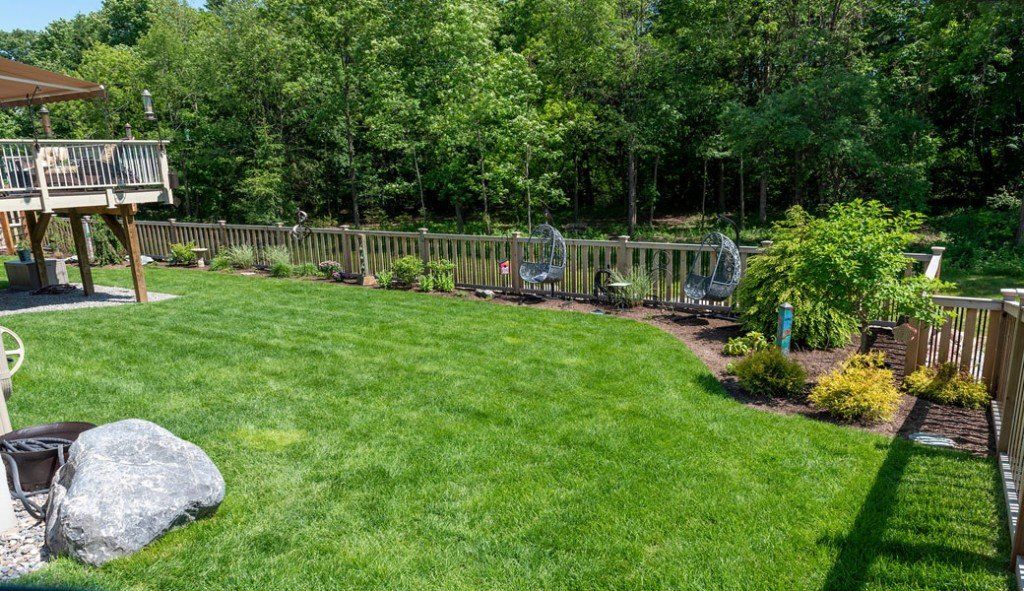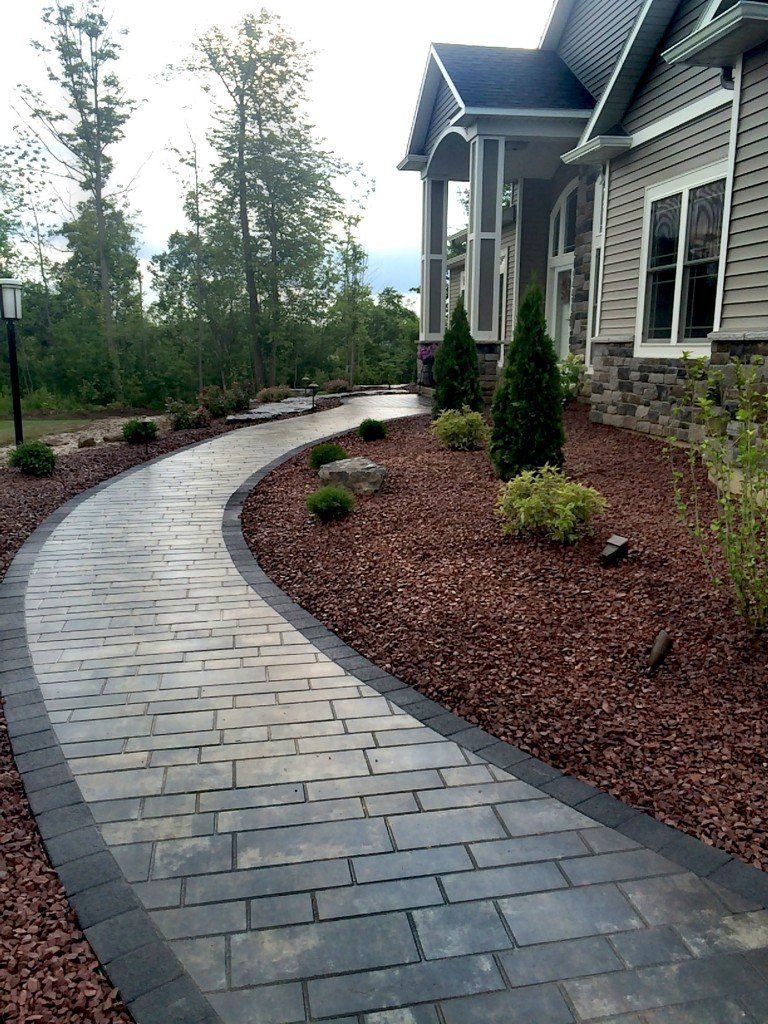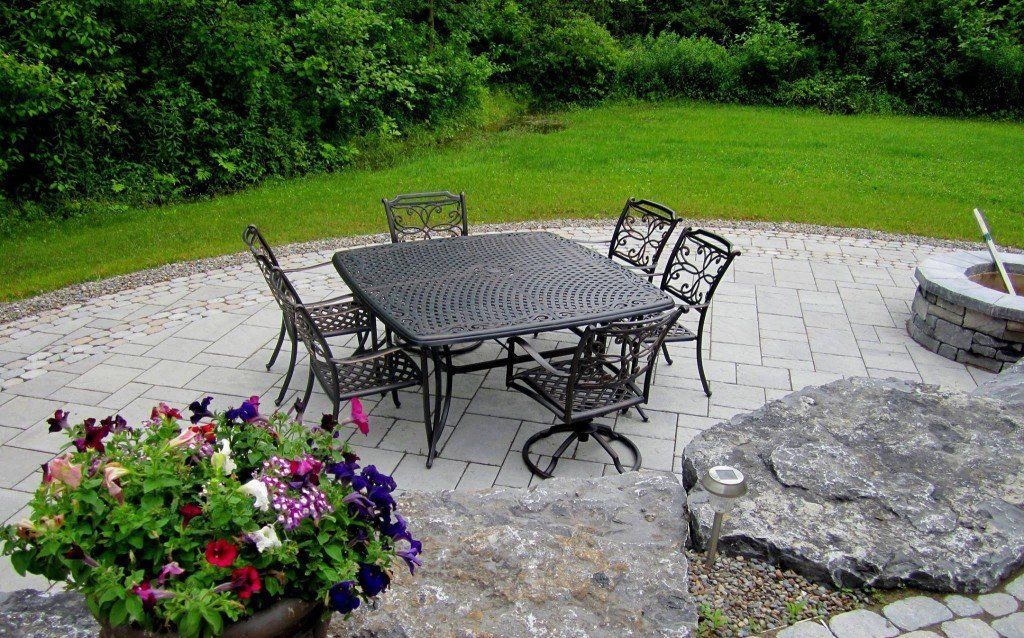How Hardscape and Softscape Work Together in Landscape Design
In the realm of professional landscape design, the focus often tends to be solely on plants and flowers. Yet, landscaping encompasses more than just softscape elements! The integration of hardscape and softscape is essential in crafting a visually appealing and practical outdoor area. This blog post delves into the significance of hardscape and softscape in landscape design and provides insights on leveraging them to fashion an exquisite garden or yard.
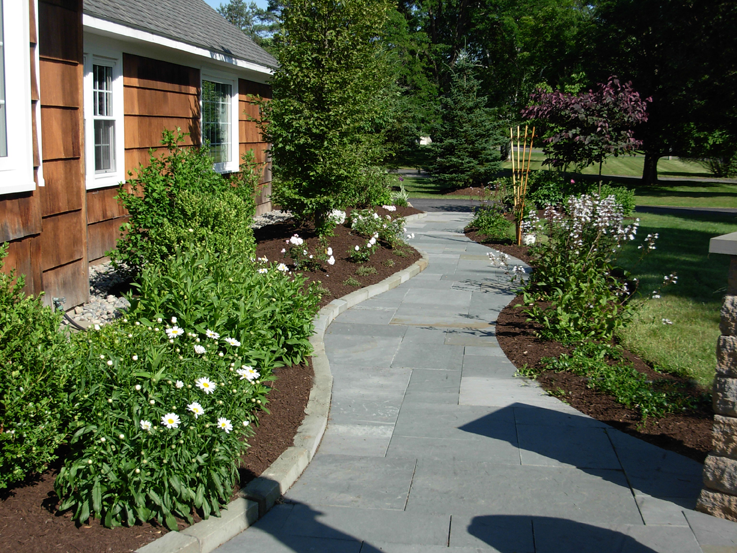
What is Hardscape?
Hardscape is a term used to describe the non-plant features of landscape design, such as pavers, stones, retaining walls, fences, and decks. These elements can be used to create walkways and patios, as well as add visual appeal to your landscape. If utilized properly, hardscape materials can help define different areas of your yard and create a more cohesive and attractive landscaping design.
Types of Hardscaping
A vast array of products and materials are available to create a stunning design for your outdoor area. Below is a detailed overview of six distinct types of hardscape elements.
Stone pathways:
Typically constructed from materials such as natural stone or concrete pavers, providing access to various parts of your garden and preventing soil compaction and dirty feet.
Retaining walls:
Retaining walls are essential structural barriers that define the boundaries of a sloped garden, effectively managing soil and water runoff to safeguard the softscape.
Fire pits:
Whether a built-in outdoor fireplace or a pit constructed from brick or stone, offer functional hardscaping that enhances the livability and comfort of your outdoor space.
Driveways:
Provide a vehicular pathway onto your property and can be constructed from concrete, brick, stone, asphalt, or other durable materials capable of withstanding weather and weight. While many homes come with pre-existing driveways, some homeowners opt to install new ones during expansions or renovations due to wear.
Shade Structures:
Pergolas and gazebos are standalone structures in your outdoor area, offering partially shaded walkways and serving as hardscaping elements available in diverse shapes, sizes, materials, and designs. They offer shade and shelter, improving the usability of your outdoor space.
Decks and patios:
Crafted from materials such as wood, brick, or concrete, decks and patios serve to extend your living area, tailored to your budget and maintenance requirements.
When choosing plants and designing your landscaping layout, use the following tips to ensure that your design layout works for your space:
- Create a sketch or plan of your space before you begin. This will help you visualize the finished product and ensure the elements work together.
- Choose plants that complement the colors and textures of your hardscape materials.
- Include both evergreen and deciduous plants in your design to add year-round interest.
- Pay attention to the scale of your hardscape elements in relation to the rest of your landscape. Excessive hardscape can cause an area to seem confined, whereas insufficient hardscape can leave it feeling incomplete.
What is softscape?
Softscape refers to the plant life in your landscape design. This includes trees, shrubs, flowers, and other foliage. Softscape can provide color and texture to your yard, as well as privacy and shade. Like hardscape, softscape can also help define the different areas of your yard and make your landscaping more cohesive.
Types of Softscapes:
Trees:
These can provide shade, privacy, and visual interest in your yard. Choose trees that are appropriate for your climate and have a growth habit that fits your space.
Shrubs:
These can add color and texture to your yard, as well as serve as natural borders or screens. Consider the height and spread of shrubs when choosing them for your landscape.
Flowers:
These can add pops of color and fragrance to your yard. When selecting flowers, consider bloom time, height, and maintenance requirements.
Groundcover:
These low-growing plants can fill in empty spaces in your landscape design and help control erosion on slopes. They also require less maintenance than traditional turf grass.
Vines:
These plants can be used to provide coverage on walls, fences, or trellises. They can also add vertical interest to your landscape design.
Grasses:
These plants can provide texture and movement in your yard, as well as help with erosion control. Choose grasses that are appropriate for your climate and the amount of sunlight they will receive.
When choosing plants and designing your landscaping layout, use the following tips to ensure that your hardscape and softscape elements work together:
- Choose plants that complement the color and style of your hardscape. For example, consider using plants with gray or silver foliage to tie everything together if you have a stone patio.
- Consider the scale of your hardscape and softscape elements. For example, if you have large pavers, you will want to choose larger plants so that they are in proportion with the hardscape.
- Use different textures to create interest and add depth to your landscape design. Pairing rough stone with soft grasses or fluffy flowers can create a beautiful contrast.
- Use both evergreen and deciduous plants in your landscape so that something is interesting to look at year-round.
Creating a Beautiful Design With Hardscape and Softscape Blending
When planning your landscape design, think about how you'll use each space. If you love hosting outside, add a cozy seating area with comfy furniture. Families with kids or pets should have open areas for play. Design your outdoor space to fit your lifestyle, making it both beautiful and useful.
Don't forget about upkeep. Some materials like gravel or mulch need more care. Choose low-maintenance options if you're short on time or resources to keep your landscape looking great with little effort.
Mixing hardscape (like patios) and softscape (like plants) makes your yard both pretty and practical. Pick materials wisely, think about their upkeep, and match them to your lifestyle to make your outdoor space special.
If you're looking to add hardscape or softscape elements to your landscape design, be sure to contact a professional landscape designer. They will be able to help you choose the right materials and blending techniques for your specific yard and needs. With their help, you can create a stunning outdoor space that you'll enjoy for years to come!
Book a Service Today
We will get back to you as soon as possible
Please try again later
We can help
Let's discuss your landscape design or home improvement project and see what we can create!




